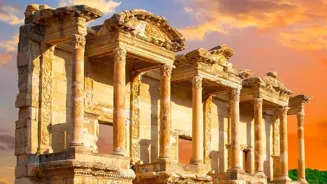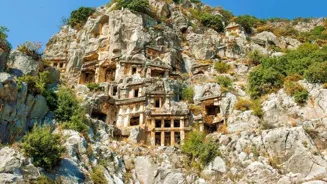Uncover India's historic gems: Explore 7 timeless sites revealing the essence of bygone eras. Dive into a journey through time
India, a land steeped in history and culture, offers a treasure trove of historical
sites that whisper tales of bygone eras. From majestic forts to ancient temples, each monument stands as a testament to the country's rich and diverse heritage.
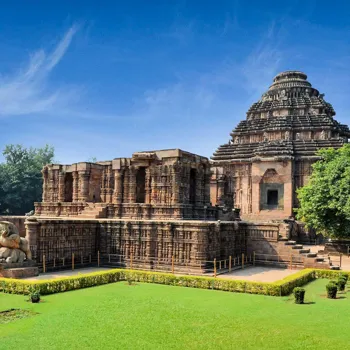
Embark on a journey through time as we explore seven must-visit historical sites that promise an unforgettable experience. These sites are not just piles of stones and bricks; they are gateways to understanding the evolution of Indian society, art, and architecture.
The Taj Mahal in Agra: symbol of eternal love and architectural brilliance
First on our list is the magnificent Taj Mahal in Agra. This ivory-white marble mausoleum, commissioned by Mughal emperor Shah Jahan in memory of his beloved wife Mumtaz Mahal, is a symbol of eternal love and architectural brilliance.
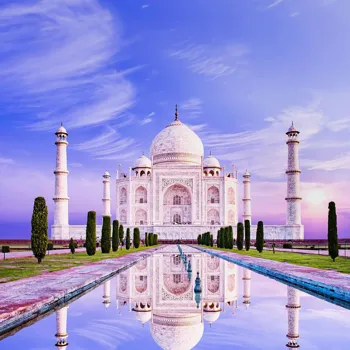
Stand in awe of its intricate carvings, perfectly symmetrical design, and the serene ambiance that surrounds it. The Taj Mahal is an epitome of Mughal artistry and a UNESCO World Heritage Site, attracting millions of visitors every year.
Its sheer beauty and historical significance make it a must-see destination for anyone interested in Indian history.
Explore Amber Fort in Jaipur, showcasing Rajput & Mughal architecture
Next, we journey to the Pink City of Jaipur, home to the formidable Amber Fort. Perched atop a hill, this fort showcases a blend of Rajput and Mughal architectural styles, with its majestic gates, courtyards, and palaces.
Explore the Sheesh Mahal, or the Palace of Mirrors, a dazzling chamber adorned with intricate mirror work, and enjoy panoramic views of the surrounding landscape. Amber Fort provides a fascinating glimpse into the lives of the Rajput rulers and their opulent lifestyle which is a marvel to witness.
The intricate designs and the sheer scale of the fort is a sight to behold.
Explore Hampi's UNESCO heritage with ancient ruins, iconic temples, and unique landscape
Our historical trail leads us to the ancient city of Hampi in Karnataka, a UNESCO World Heritage Site. Once the capital of the Vijayanagara Empire, Hampi is now a vast expanse of ruins that bear witness to its glorious past.
Explore the Virupaksha Temple, a functioning temple dedicated to Lord Shiva, the Vittala Temple, known for its iconic stone chariot, and the Lotus Mahal, a beautiful palace that reflects a blend of Indian and Islamic architectural styles.
Hampi's unique landscape, dotted with boulders and ancient structures, creates an otherworldly charm.
Qutub Minar: Symbol of Delhi Sultanate's power and architectural brilliance
The Qutub Minar in Delhi stands tall as a symbol of the Delhi Sultanate's power and architectural prowess. This towering minaret, built in the 12th century by Qutb-ud-din Aibak, is a UNESCO World Heritage Site and one of the tallest minarets in India.
Admire its intricate carvings, inscriptions, and the surrounding complex of historical buildings, including the Quwwat-ul-Islam Mosque. The Qutub Minar is a testament to the fusion of Indo-Islamic architectural styles and a reminder of Delhi's rich historical past.
The sheer height and intricate carvings of the minaret is sure to leave you in admiration.
Ajanta and Ellora Caves: Ancient Indian art and religious harmony in Maharashtra
Ajanta and Ellora Caves in Maharashtra offer a fascinating glimpse into the artistic and religious traditions of ancient India. These rock-cut caves, carved out of basalt cliffs, showcase a seamless blend of Hindu, Buddhist, and Jain art.
Ajanta Caves are renowned for their exquisite murals depicting scenes from the Jataka tales, while Ellora Caves are known for their monolithic rock-cut temples, including the Kailasa Temple, the world's largest monolithic structure.
These caves are a treasure trove of ancient art and a testament to the religious harmony of ancient India showcasing great detail.
The Gateway of India: Iconic colonial landmark in Mumbai
The Gateway of India, located in Mumbai, stands as a majestic arch overlooking the Arabian Sea. Built during the British Raj, the Gateway served as a ceremonial entrance to India.
Its Indo-Saracenic architectural style, a blend of Indian, Islamic, and European elements, makes it a prominent landmark of the city. Take a stroll along the waterfront, enjoy the sea breeze, and soak in the historical ambience of this iconic monument.
The Gateway of India is a reminder of India's colonial past and its transition to independence and it stands out.
Victoria Memorial in Kolkata reflects city's colonial history
Finally, we visit the Victoria Memorial in Kolkata, a grand marble building dedicated to Queen Victoria. This iconic landmark showcases a blend of British and Indian architectural styles, reflecting the colonial history of the city.
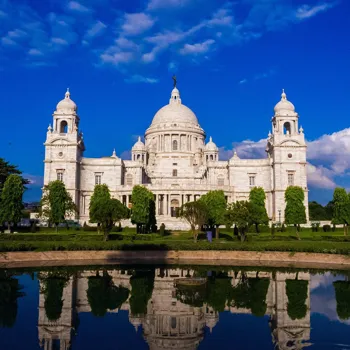
Explore the museum inside, which houses a collection of artifacts, paintings, and sculptures that depict the history of British India.
The Victoria Memorial is a symbol of Kolkata's colonial heritage and a reminder of the city's role in the British Empire and the memorial building is a visual treat.
Explore historical sites in India for a rich journey through time
Visiting these historical sites is more than just sightseeing; it's an immersive experience that connects you to the past. It allows you to appreciate the architectural brilliance, artistic expressions, and cultural values of the people who lived before us.
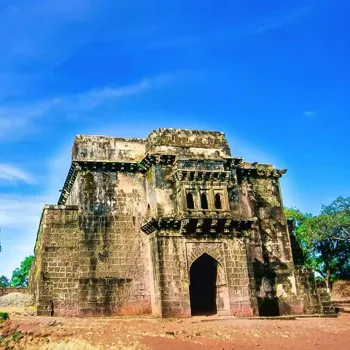
So, pack your bags and get ready to embark on a journey through time, exploring the rich heritage of India. These monuments stand as silent witnesses to history, waiting to share their stories with all those who seek to listen and learn.
By visiting these sites, we not only learn about the past but also gain a deeper understanding of our present and future and preserve our heritage.
AI Generated Content. Glance/InMobi shall have no liability for the content